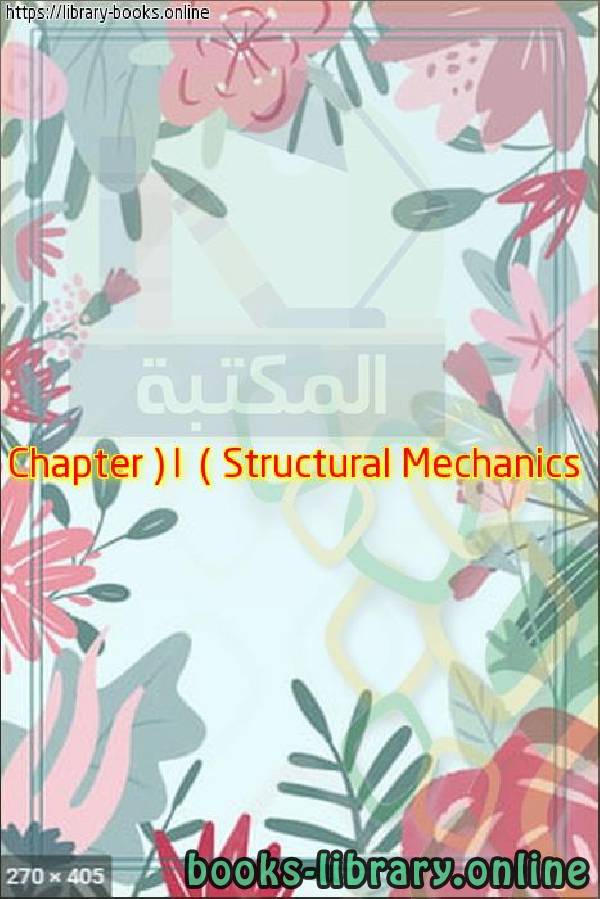📘 قراءة كتاب Chapter (1 ) Structural Mechanics أونلاين


Chapter 1
Structural Mechanics
Introduction
There are many different types of structures all around us. Each structure has a specific purpose or function. Some structures are simple, while others are complex; however there are two basic principles of composing structures.
They must be capable of carrying the loads that they are designed for without collapsing.
They must support the various parts of the external load in the correct relative position.
A structure refers to a system with connected parts used to support a load. Some examples related to civil engineering are buildings, bridges and towers. However, these structures are very complex for analyze and design. At first, we will consider simple examples of structures and parts of structures like beams, trusses, frames etc. It is important for a structural engineer to recognize the various type of elements composing a structures and to be able to classify them as to there form and function. We will introduce some of these aspects.
Structural elements:
Some of most common structural elements are as follow:
Tie rods – structural members subjected to a tensile force. Due to the nature of the load, these elements are rather slender and are often chosen from rods, bars, angels, or channels.
beams – straight horizontal members are used generally to carry vertical loads.
Beams may be designed from several of element and materials – concrete, metal etc. with rectangular or other cross section.
columns –members are generally vertical and resist axial compressive loads.
Columns are elements similar to the tie rods but they carry vertical loads.
حجم الكتاب عند التحميل : 4.2 ميجا بايت .
نوع الكتاب : pdf.
عداد القراءة:
اذا اعجبك الكتاب فضلاً اضغط على أعجبني و يمكنك تحميله من هنا:

شكرًا لمساهمتكم
شكراً لمساهمتكم معنا في الإرتقاء بمستوى المكتبة ، يمكنكم االتبليغ عن اخطاء او سوء اختيار للكتب وتصنيفها ومحتواها ، أو كتاب يُمنع نشره ، او محمي بحقوق طبع ونشر ، فضلاً قم بالتبليغ عن الكتاب المُخالف:
 قبل تحميل الكتاب ..
قبل تحميل الكتاب ..
يجب ان يتوفر لديكم برنامج تشغيل وقراءة ملفات pdf
يمكن تحميلة من هنا 'http://get.adobe.com/reader/'


 منصّة المكتبة
منصّة المكتبة